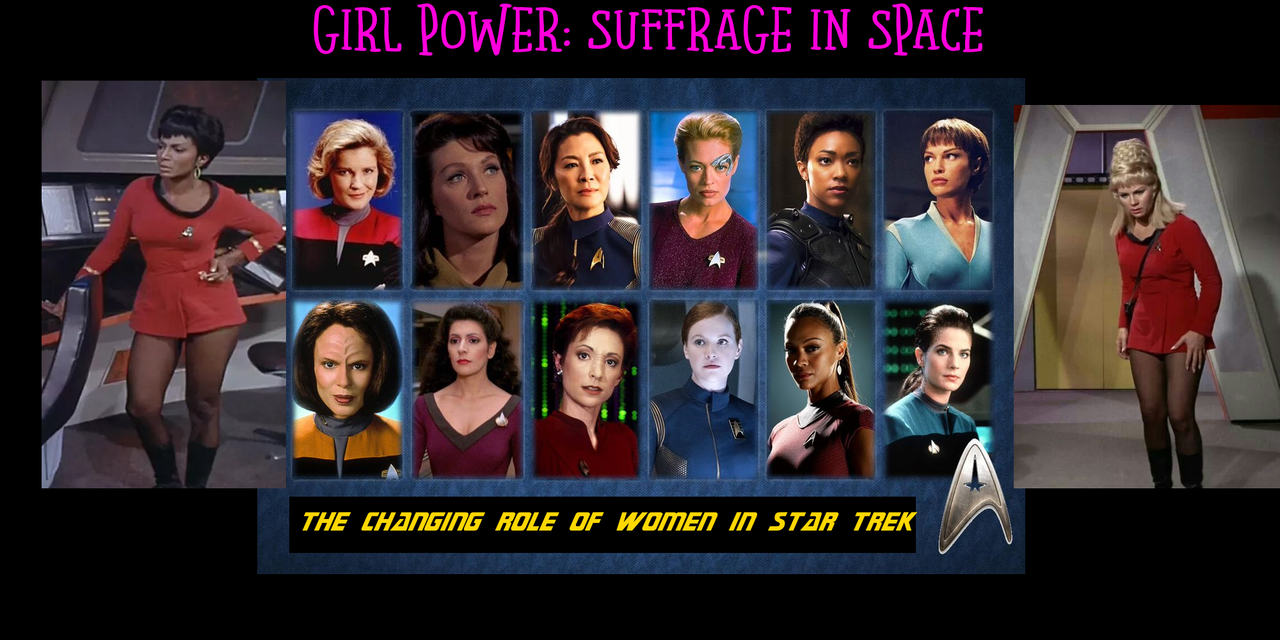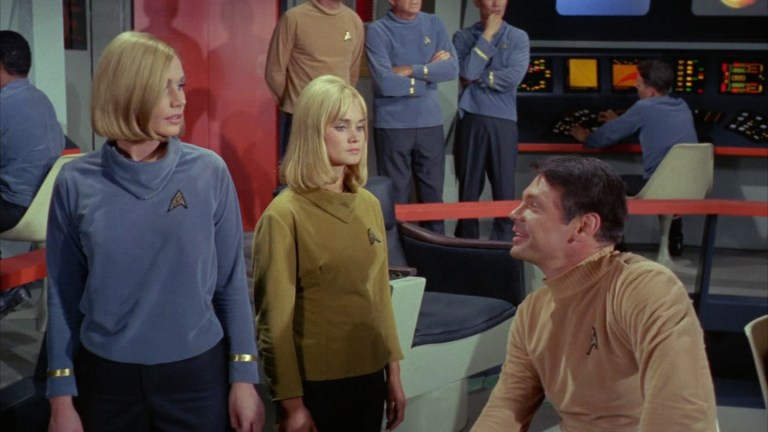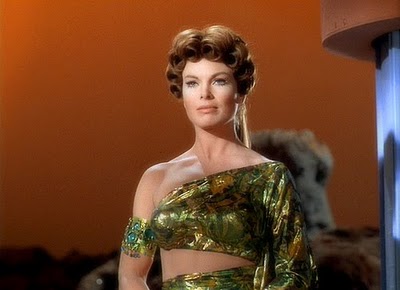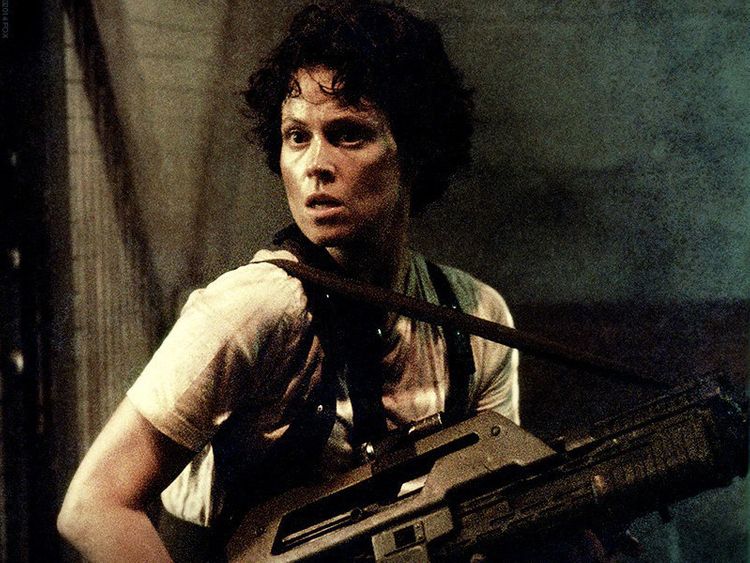
Season One: To Boldly Condescend Like No Man Has Condescended Before!

The first episode proper, “The Man Trap”, has the newly-introduced physician Dr. McCoy lured almost to his death by an alien posing as his dead ex-girlfriend, and so the woman is already established as a threatening creature, not to be trusted. We could glean that from the title if nothing else. Following on from this, “Charlie X” - on the face of it a primarily light-hearted and quite silly episode which sort of takes as its central figure the child in the Twilight Zone who can make anything happen just by thinking about it - features a rather unhealthy infatuation by the kid with our Janice Rand, and a typically sixties seen-as-fun smack on her behind, which, while surely nothing much, doesn’t do a lot to elevate the status of women on the ship, especially when Kirk, flustered, can’t actually tell Charlie why such behaviour is not acceptable. Also slightly disturbing is the muzzling of Uhura, when she sings and Charlie doesn’t like the fact that she’s making gentle fun of him. Finally, putting all this power into a young male’s hands is disastrous anyway, but couldn’t it have been a young girl? Maybe that would have sent the wrong signal, or maybe a young girl would have behaved, even at that age, more responsibly.
“Where No Man Has Gone Before”, the original re-written pilot, teams the female doctor up with the insane bad guy, and though she gives her life in the end to save Kirk and the crew, the lasting message is that women are easily led. Worse is to come though, far worse, when, in “The Enemy Within”, an evil Kirk all but rapes Rand. This is powerful stuff for this time, and to be commended in terms of bravery, but for women it does nothing but reinforce the belief, the fact that they, as women, are basically defenceless, and should the male crew turn on them, they are, in the words of South Park, going to have a bad time.

I imagine this might have caused some controversy when first shown, though I don’t honestly find any mention of it. The next one is nearly as bad, with Harry Mudd basically a pimp hawking women around to miners (with an “e”, but still) - ostensibly as their wives, but I don’t see no preacher, so, you know… Following this we have “What Are Little Girls Made Of?” which, while for the first (and possibly only) time allows Nurse Chapel to feature in a story, still kind of relegates her to the position of a damsel in distress who has to be rescued by the menfolk, “Miri”, where Kirk basically gets it on with a little girl (hence the episode being banned for decades) while “Shore Leave” again sees the women crewmembers in danger from which they have to be rescued.
Some of this, admittedly, is perhaps me pushing the panic button a little - not every episode demeans women, probably not many do, going by the standard of the time, but looking back on the show now it’s hard, very hard to pick out a strong female character, or even one who featured more than once in a while. If you were to list the main crew of the Enterprise, you’d have Kirk, Spock, Sulu, Scotty, McCoy and later Chekov. You might add Uhura. You would not find any other female crew to go on the list. You might be gallant and include Rand, but that would be it. Although famous females would guest, they would still play second fiddle to Kirk, and to a lesser extent Spock and McCoy.
Going back to the episodes, you have next “The Squire of Gothos”. It’s a fun episode (though basically a rewrite or update of “Charlie X”, even down to the ending) but the only role for a woman in it - remember his condescending comment earlier? - is for Trelayne to fight over with Kirk. Admittedly, it’s a ploy by the captain to make the alien lose his control, but his jealousy certainly seems real! “Space Seed”, of course, has the helplessly-smitten woman follow the brave eugenics superman Khan into a life of exile, while even the massive presence of the legendary Joan Collins can’t make much of an impact in the fan favourite, “The City on the Edge of Forever”, surely a vehicle for a strong female character if ever there was one. To be totally fair, they do all right with her character but in the end it’s Kirk we focus on, once again, as he agonises over the need to let Collins’ character die, until Spock helps him to forget.
And that’s only season one!
So to recap: do we have any strong female figures? Even in the first season - and all the way through - I tend to discount Uhura. Certainly, she made history as the first “major” black female actress, and for that she should always be proud: breaking out of the mould of playing a maid or some other servant, Nichols - and Roddenberry, to his credit - showed a generation of young black females they could make it on TV, that they didn’t have to accept the menial roles they had historically been offered. But that’s really more about race than gender, and I maintain that once she was there, Nicholls was allowed do very little with her character. Name one episode - other than “Plato’s Stepchildren”, in which, again, she is anyway a damsel in distress - in which Uhura plays even a good supporting role. I certainly can’t, and I’ve tried. It just does not exist. You almost never see her away from the bridge, hardly ever on a planet, and while she does take some credit for her singing in “Charlie X”, ultimately she ends up being punished for it, so is there a message there?

Being romantically linked with, and later married to Gene Roddenberry didn’t guarantee Majel Barret any good storylines for her character, either: Nurse Chapel was seldom onscreen unless assisting the doctor (other than the once mentioned above) and while there was a weak attempt at an attraction between her and Spock, it never went anywhere, except during “Amok Time”, when there was a tender scene between the two. Rand’s contributions add up to standing around gazing at Kirk as she waits with a report pad and being attacked by his evil alter-ego. No other women of note, on or off of the Enterprise, surface, other than Edith Keeler, and I’ve dealt with that above and shown that even Joan Collins could get the just-stand-there-and-look-pretty treatment from the show.
So what about season two? Did it get any better?
Um…












